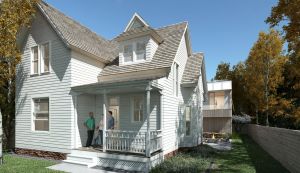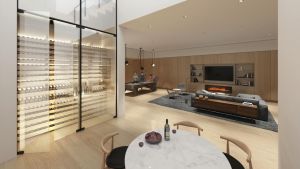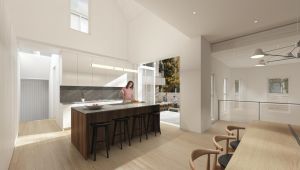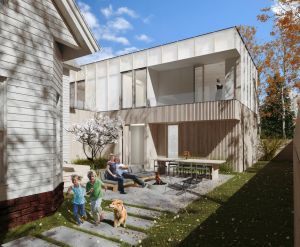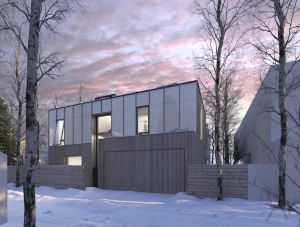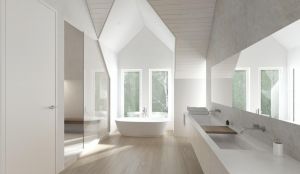Simply Oak™ has had the pleasure of working on this beautiful Custom Home in Aspen with the very talented team at RO | ROCKETT DESIGN. We supplied material for the floors, ceilings and walls. It has been an absolute pleasure working on this project with the entire team, thank you Zac, Jason and Andrew.
Built in 1890 this West End Modern Victorian is an incredible re-conceptualized classic Aspen Victorian. This home sits in the prime heart of Aspen’s West End, and offers the best of Aspen’s Victorian-era history and cutting edge modern design of today. An easy stroll to the Core, this West End Modern Victorian offers a simple classic Victorian exterior in the front, coupled with a progressive modern addition of light wood and milky glass. The finest finishes and materials, including Boffi kitchen and bathrooms!
Between 1883 and 1885, the population in Aspen increased from 500 to 3,500 people, and the town had municipal water service, a telegraph, telephones and electricity. Aspen was in the thrust of a building boom, including construction of over twenty business buildings, and in 1884, well over one hundred homes to meet a housing shortage. Civic improvements were made and the City Council added street signs and house numbers.
By 1892 Aspen was the third largest city in Colorado with 12,000 residents—only surpassed by Denver and Leadville. It did surpass Leadville to become Colorado’s leading silver producer, and housed the largest opera house in the state and finest luxury hotel on the Western Slope. In the spring of 1893, the financial success of Aspen was devastated when Congress repealed the Sherman Silver Purchase Act. The “Silver Queen” of the Rockies came to a grinding halt, as did almost all of Colorado’s silver mines. By the end of 1893, the mining workforce had dropped from 2,250 to 150 men. By 1900, Aspen’s total population had dropped to 3,300 people and by 1930 had reached a low of 700 people. The events of 1893 initiated a period commonly referred to as the ‘Quiet Years’, which lasted until the 1930s. Homes were vacant, stores empty and the grand architecture of the commercial and residential blocks entered a long stage of deterioration and neglect. Entire blocks were barren without a single occupied house and buildings stood as bare skeletons, the victims of salvaging for materials, fire and vandalism. Snow and spectacular mountains would provide the resources in the 1930s for Aspen to begin development as an international ski resort.
In the 1960s and 70s development pressure in Aspen began to increase considerably. Numerous remaining Victorian era homes were remodeled, moved or torn down for new construction. Encouraged by a citizen’s group called “Save the Victorians,” City Council adopted a historic preservation ordinance in 1972 and created the Historic Preservation Commission. Aspen was one of the first communities in the state, and among the earliest cities in the nation, to adopt preservation regulations.
RO | ROCKETT DESIGN is a full service architecture and design collaborative interested in improving, re-imagining and creating spaces, landscapes and environments. We aim for our projects to provide and evoke the spectrum of experience from utility to simple joy; places that we want to return to over and over. Our design philosophy is centered around the belief that spaces need to be shaped, lit and clothed in a way that can dynamically mediate an occupant’s relationship with the surrounding site, both near and far. We have a specific focus on the proportion of spaces, the use and registration of natural light throughout a room and the manner in which materials lend character and tactility to a place. Our studios live in Los Angeles and San Francisco, however they function as one, thinking and producing interactively and seamlessly in real-time on all projects.
